You’ve probably already been introduced to the traditional body typing system, with your hourglass figures, pear shapes, apple shapes, inverted triangle, and rectangle shapes. But, there is another advanced body shape system that gives a whole new meaning to your look, and it’s called the Kibbe Image Identity System.
The Kibbe Body Types
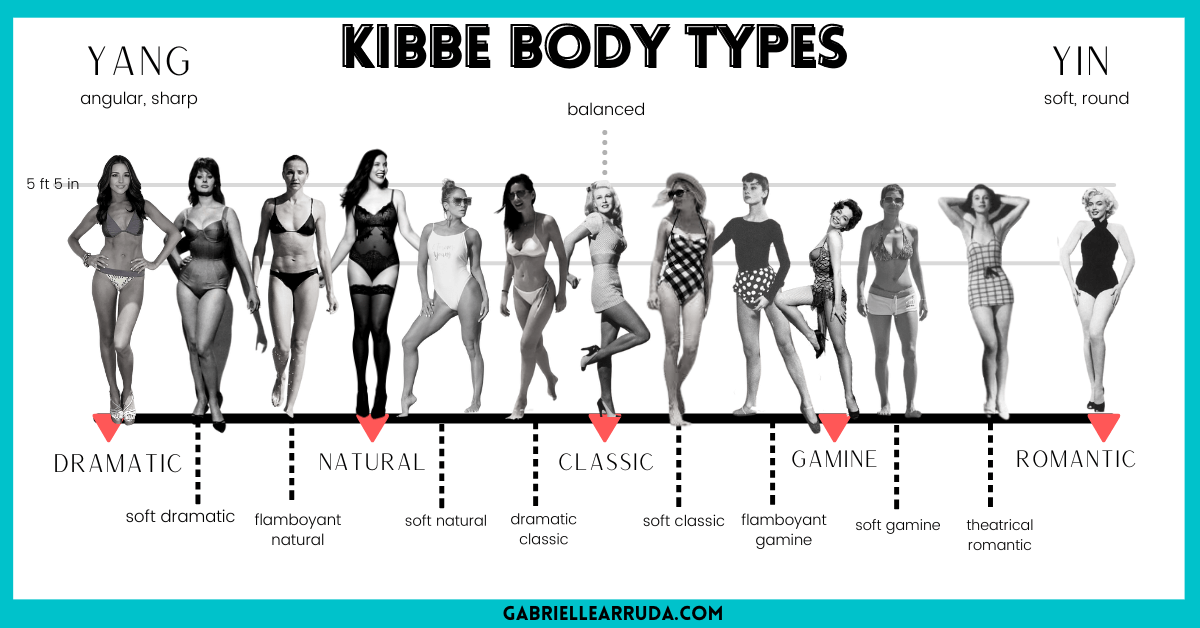
The Kibbe body type system involves 5 base categories and then specifies 13 image-based body types. We will go over each Kibbe type in depth, shortly.
The system itself is based on embracing your natural body shape and taking into consideration both your skeletal system and your flesh which creates your full-body shape and style. As well as your facial features (flesh and skeletal). It also incorporates your personal “essence” and personality traits that can seemingly dictate your style and visual impact.
The kibbe body type system focuses on an axis of yin (curved, soft) versus yang (angular, structured). The 5 main types along the scale are: dramatic, natural, classic, gamine, and romantic. And within that scale becomes 13 more specified body types, which examine how much contrast/blending there is of each main family.
Each of these 13 types is labeled as a Kibbe Image Identity Type ( or an image ID) and it covers your entire look and style. It covers your entire appearance including style/clothing, hair, face shape, and makeup which in turn creates a more in-depth way to examine your body type.

Above you can see the updated 10 Kibbe IDs and their dominant traits. David Kibbe has more recently removed Pure Natural, Pure Classic, and Pure Gamine. Please note, that these are generalized sketches and don’t represent every possibility for an ID.
Who created the Kibbe Body Types?
David Kibbe created the Kibbe Body types in 1987 with his book Metamorphosis: Discover Your Image Identity and Dazzle As Only You Can.
The book itself is currently out of print, but David Kibbe is currently working on a new book with a tbd release date. David Kibbe created this yin/yang system to help people embrace their inner and outer beauty and find clothes that harmonize with their body and essence.
It is important to note David Kibbe feels (felt) that no piece of clothing or accessory was relegated to a specific body type. And that it has more to do with a person’s essence and their ability to integrate that piece into their style.
Understanding the goals of the Kibbe Body Type System
The goal of the kibbe body system is to help you narrow down your unique silhouette and to dress accordingly. And to expand your base understanding of why you gravitate towards certain styles, or why certain clothes just don’t seem to fit you.
Now, the original book is out of date, but that doesn’t mean you can’t embrace the Kibbe body system with some modern interpretations and evolutions.
David Kibbe believed the traditional body typing system was flawed and created a dumb-downed explanation of style and shape. Which led to a homogenization of style and fashion.
Rather than focusing on trends and copying the latest style icon’s outfit of the day, Kibbe aimed for a focus on harmonious looks and individual style cultivated from your uniqueness. His system may seem complex
Theoretically, he was an early adopter of the body-positivity movement. Focusing more on natural shape, embracing your unique attributes, and a base theory that your image and style are not limited by society’s ideals.
His philosophy includes an appreciation for the natural body and general disapproval of body homogenization. Whereas the fruit systems have everyone pretending to look like hourglasses, Kibbe focuses on your own inner and outer beauty.
I don’t know if you’ve watched reality tv, but you know when you look at a reality starlet’s face and you can just tell they have had work done? Like, nothing about their face seems bad- in fact, from a societal perspective, they seem to check all the boxes for beauty… But, somehow, their face just doesn’t work. This is what Kibbe disapproves of, as those changes distort the natural shape and inherited features that he believes should be embraced.
Kibbe Body Types: The Foundation
The kibbe body type examines your balance of yin and yang and further looks at how contrasted or blended those attributes are.
The system believes in embracing yourself and resists the traditional body typing that endorses “hiding problem areas” or focusing on your “highlights”.
Yin & Yang
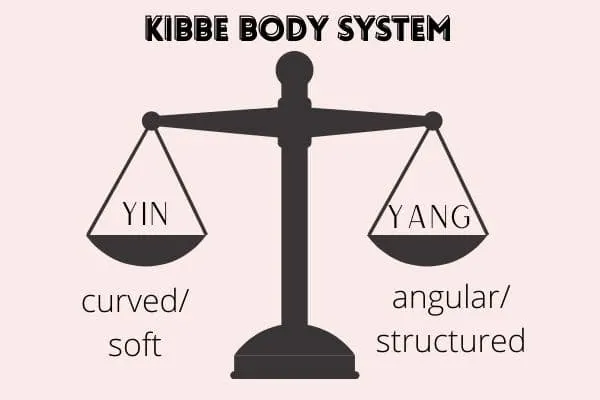
In order to understand the Kibbe body types, you first need to understand the balance of yin and yang.
Yin and Yang is specifically defined as :
a concept of dualism, describing how seemingly opposite or contrary forces may actually be complementary, interconnected, and interdependent in the natural world, and how they may give rise to each other as they interrelate to one another
source
It’s a dualism that has two opposing forces like light versus dark, or soft versus hard.
Your body, face, and look are composed of a combination of attributes that can either be classified as yin (soft) or yang (structured).
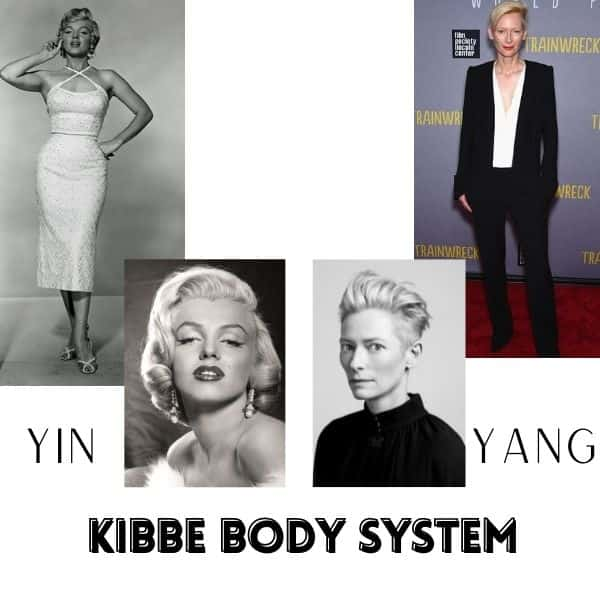
YIN (soft/round): The concept of yin refers to soft edges, rounded shapes, hourglass figures, smooth lines, and flowing silhouettes.
YANG (sharp/vertical): The concept of yang refers to angular structures, harsh lines, elongated silhouettes, geometric shapes like rectangles and triangles, and verticality.
In order to understand the basics of yin and yang let’s go over some physical attributes associated with each.
| Yin | Yang |
| Petite or short | Tall, vertical |
| curvy or round | angular, lean, straight |
| full lips | thin lips, straight lips |
| round face | angular face |
| large, doe-like eyes | almond eyes or narrow eyes |
| soft cheeks | sharp cheekbones |
| sloped shoulders | broad or angular shoulders |
| soft jawline, rounded | sharp jawline, very defined |
| flow, soft fabrics | structured fabrics and tailored pieces |
| rounded nose, button nose | sloped nose, prominent nose |
| fleshy | muscular |
| delicate | sharpness |
But, that’s not all! Kibbe is very detailed and recognizes that there are other characteristics that can play into the impact of yin and yang. (see chart)
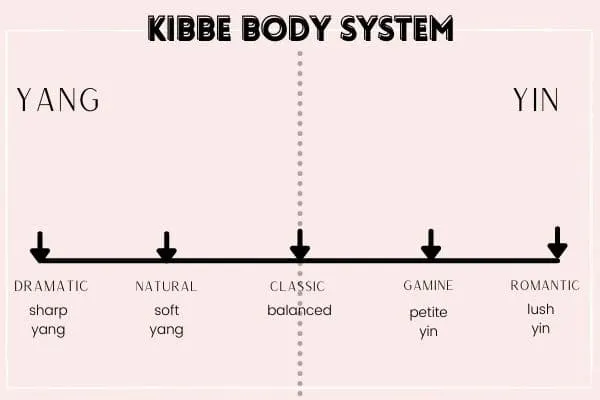
Petite Yin: Characterized by delicate bone structure and small features (nose, hands, feet, stature)
Lush Yin: Characterized by fuller lips, large eyes, hourglass curves, and a more sexual essence
Soft Yang: Characterized by blunt edges, broad/horizontal features, and a slightly broad physical body shape that still has verticality
Sharp Yang: Characterized by verticality, sharp lines and edges, elongated bodies, and very little definition along the waist.
Contrast and Blend
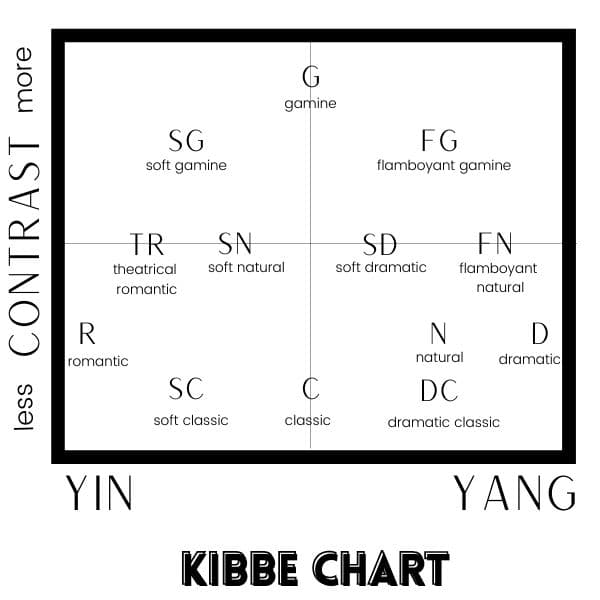
The terms contrasted and blended refer to the balance of yin and yang within the body (including face, body, and overall look) and how they are distributed within each portion.
A blended body type or image is one that is a mix of both yin and yang (within one physical attribute), with no prominence toward either category.
The blended body type falls somewhere between the axis with combinations of yin and yang throughout their body.
Here’s an example of a blended image/body type
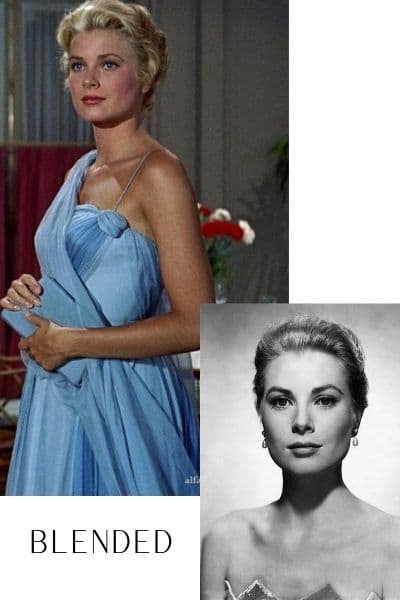
Grace Kelley is a great example of a blended body type, classified originally as pure classic but updated to be a soft classic. Her skeletal shape is symmetrical but she has soft, rounded edges. Her features are delicate, but her waist is only subtly defined. Her facial features are generally soft, but she has a more defined nose. Each one of the three categories bone structure, body flesh, and facial features (bone and flesh) is mixed with balanced yin and yang elements.
Here’s an example of a contrasted image/body type:
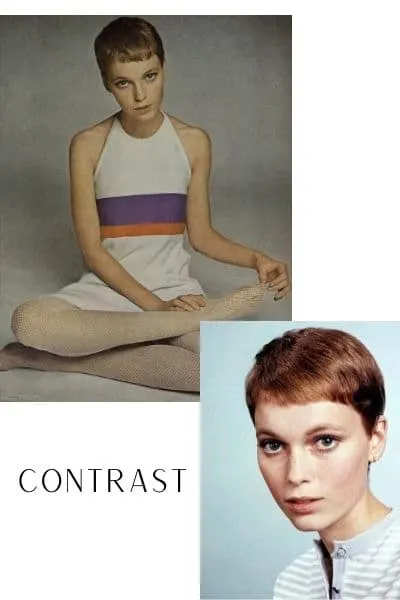
If you look at the chart above you can see the gamine type is the most contrasted. That is because is a (50/50 approximately) mix of both yin and yang. She has contrasted facial features, but she is also contrasted as a gamine because she is yin in size (kibbe petite) and yang in bone structure. Each one of the three categories bone structure, body flesh, and facial features (bone and flesh) has an individual dominant yin OR dominant yang.
It’s important to realize this difference. All three of those categories: bone/skeletal structure, body/flesh, and facial features (both bones and flesh) can have a different yin and yang spread.
PLEASE NOTE:
A lot of people misconstrue yin and yang to be feminine and masculine, respectively. This is totally incorrect and should not be used as a basis for your understanding. Please see it as qualities of shape/texture/detail instead. Yang is long, angular, and sharp, and yin is soft, rounded, and delicate.
Associating masculine or feminine to these principles creates bias and misunderstanding. For instance, everyone wants to see “feminine” features in themselves if they identify as or were born female.
ALSO, when Kibbe refers to fleshiness he does not mean your BMI or your actual weight. Instead, it refers to how your flesh drapes over your bones. Is it soft flesh, or are you lean and muscular? Do you have sharp bones with soft flesh over them? Etc.
The 5 Kibbe Base Families
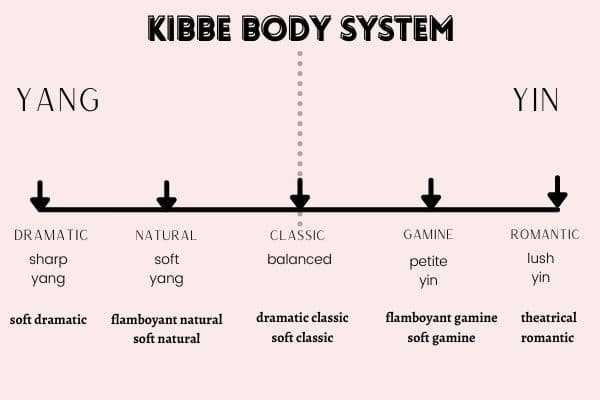
The Kibbe system is composed of 10 individual types, but they all fall along the axis of 5 main families: Dramatic, natural, classic, gamine, and romantic.

Dramatic
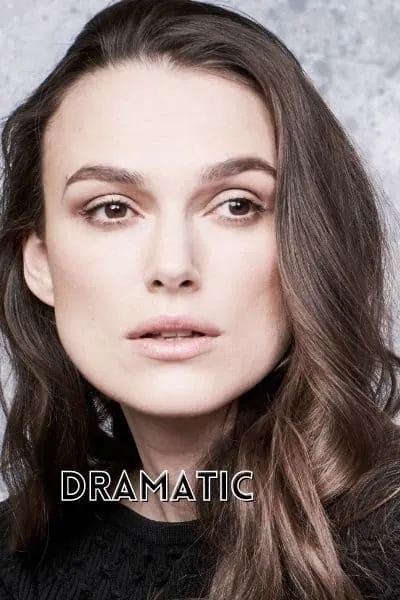
The dramatic body type is tall, vertical, and angular. And is composed of all sharp yang features in body structure, flesh, and facial features.
A lot of women don’t want this image ID because of the association with “masculine” features. As we discussed previously, yin and yang really don’t have to do with masculine versus feminine but rather a duality of soft versus hard, or angular versus curved. So try not to bias yourself by associating the dramatic with being masculine. In fact, alot supermodels fall into the dramatic body type.
Features: The dramatic frame is tall and narrow with little to no definition in their waist-to-hip ratio. They are tall and have long limbs and a visible bone structure. (not a lot of flesh) They tend to be over 5ft 7 in.
Examples: Tilda Swinton, Kiera Knightly, Kristen Wiig, Maggie Smith, Olivia Culpo, Lauren Bacall, Joan Crawford, and Katherine Hepburn.
Classic
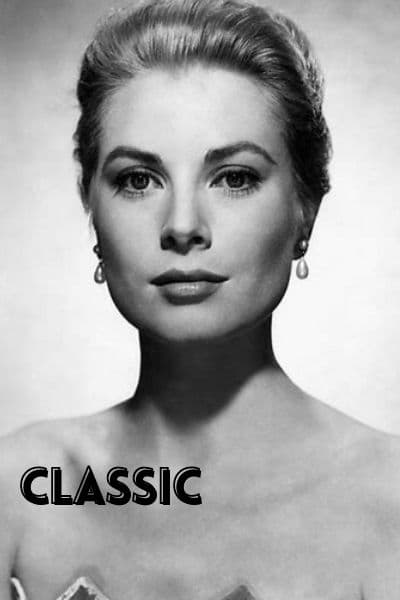
The Classic image ID is composed of 50% yin, and 50% yang blended together. So each part of your natural body has an even balance of soft and sharp features. This produces an even, refined look that feels balanced.
Features: The classic kibbe body type has moderate height, usually between 5 ft 4 in and 5 ft 7 in. They have even proportions and are neither short nor long-waisted. Because of their balanced proportions, they can give off a lithe, svelte appearance. They have a balanced feeling between their bust and hips but tend to be more straight. Their facial features are usually moderate and symmetrical.
Examples: Grace Kelly, Cybill Shepard, Diane Sawyer
Please note that since Pure Classic does not exist, most pure classics have been moved to either Dramatic classic or soft classic. It has been suggested that no body is perfectly split between yin and yang and therefore the individual would lean slightly yang (dramatic classic) or slightly yin (soft classic).
Gamine
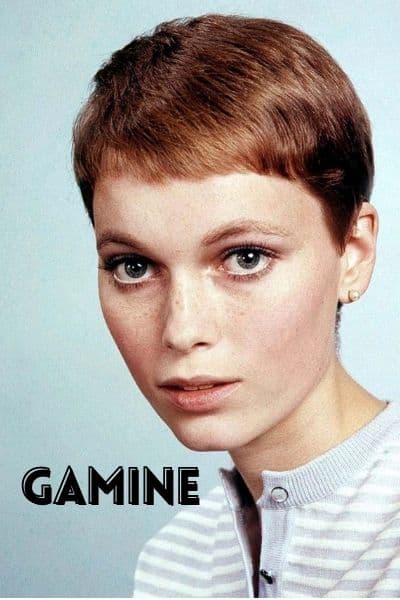
The gamine body type is also an even mix of yin and yang, however, the key difference is that each feature is not an individual blend of yin AND yang, but is rather yin OR yang. So no blending! This would look something like round full eyes (yin), a sharp nose (yang), and a strong jawbone (yang), with widow brows (yin).
This creates a lot of contrast as each feature ( body flesh, skeletal, and facial features) all belong separately to yin OR yang. They are yin in size, naturally.
Features: The gamine body type has a petite stature and is usually under 5 ft 5 in. They have a lithe frame that tends to show off some toned musculature. Their bone structure can be described as angular, and narrow but because of their shorter stature, it has an essence of delicateness. Their facial features traditionally have large, doll-like eyes, taut cheeks, and moderate-sized lips.
Examples: Mia Farrow, Edith Piaf, Heather Locklear, Jean Sternberg
Natural
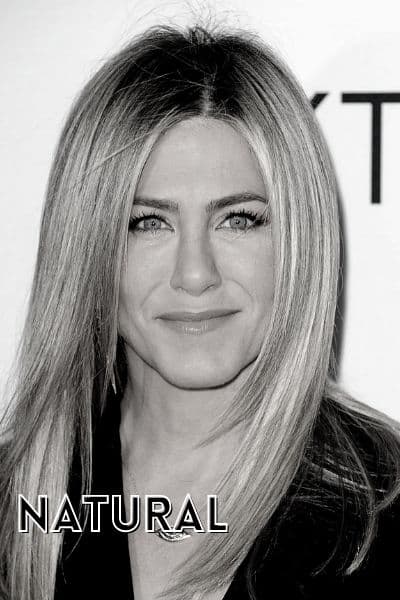
The natural body type is best described as “soft yang” or “blunt yang”. It is composed of horizontal features, and blunt edges, and still has some of the verticality of the dramatic (Flamboyant natural, FN) or curve (soft natural, SN).
Features: The natural body type is moderate to tall. They can give off a squarish silhouette because of their physicality and lack of fleshiness. They have angular features with blunt edges. They are usually muscular but lean and toned. Their facial features usually have angular, straight noses with taut cheeks, and moderate lips.
Examples: Cameron Diaz (FN), Jennifer Lawrence (FN), Amy Adams (FN), Michelle Obama (FN)
Helen Mirren (SN), Kamala Harris (SN), Scarlett Johansson (SN)
Romantic
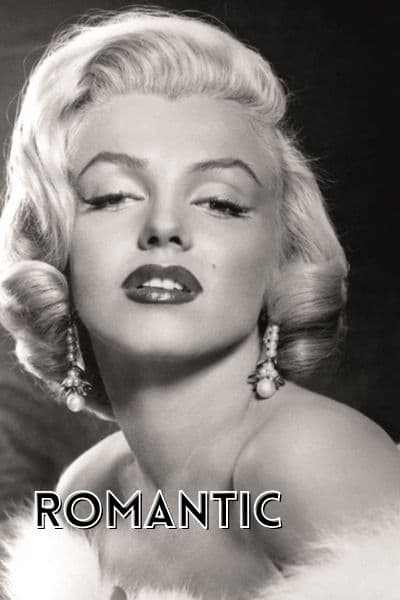
The Romantic body type is all about lush yin. It includes no sharp features or angles and usually embraces curves, rounded edges, and a more hourglass or voluptuous frame.
Marilyn Monroe is the poster child for the romantic body type. Everything from her facial features, her flesh, and her skeletal structure is round and soft.
Features: Romantics have “short” or smaller bones and limbs. If they don’t have traditional hourglass curves their frame is still naturally rounded and delicate. They have what kibbe calls “double curve”. This doesn’t mean overly voluptuous necessarily, but it means they have smaller bones and their flesh (not fat) creates a soft snowman shape.
Here’s some more information on kibbe curve concepts:
What should romantics wear: Romantics need to wear clothes that hug their curves and that drape snuggly around the body. Not only does this represent their essence but it also embraces and highlights their soft flesh.
Examples: Marilyn Monroe, Madonna, Drew Barrymore, Christina Ricci
The 13 Kibbe Body Types


- Dramatic (D)
- Soft Dramatic (SD)
- Flamboyant Natural (FN)
- Natural (N)
- Soft Natural (SN)
- Dramatic Classic (DC)
- Classic (C )
- Soft Classic (SC)
- Flamboyant Gamine (FG)
- Gamine (G)
- Soft Gamine (SG)
- Theatrical Romantic (TR)
- Romantic (R )
| Kibbe Types | Bone Structure | Body Flesh | Facial Flesh |
| Dramatic (D) | Sharp Yang | Sharp Yang | Sharp Yang |
| Soft Dramatic (SD) | Sharp Yang | Lush Yin | Lush Yin |
| Flamboyant Natural (FN) | Sharp Yang | Soft Yang | Soft Yang |
| Natural (N) | Soft Yang | Soft Yang | Soft Yang |
| Soft Natural (SN) | Soft Yang | Yin | Yin |
| Dramatic Classic (DC) | Sharp yang | Balanced | Balanced |
| Classic (C ) | Balanced | Balanced | Balanced |
| Soft Classic (SC) | Balanced | Yin | Yin |
| Flamboyant Gamine (FG) | Sharp Yang | Yin | Yin |
| Gamine (G) | Sharp Yang | Sharp Yang | Lush Yin |
| Soft Gamine (SG) | Sharp Yang | Yin | Yin |
| Theatrical Romantic (TR) | Lush yin sharp yang notes | Yin | Yin |
| Romantic (R ) | Lush Yin | Lush Yin | Lush Yin |
We went over the five main kibbe body families above, but here is a breakdown of the other 8 kibbe body types:
Soft Dramatic
(SD): Sharp yang with lush yin
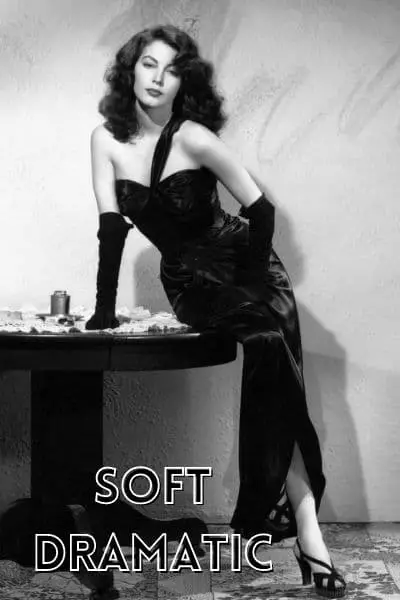
Soft Dramatics have an interesting combination because while they have long, narrow frames (yang) they also have prominent curves (lush yin). They often have strong shoulders or backs, but because of their curves and length, they remain in the soft dramatic category (as opposed to a soft natural or flamboyant natural). They are usually over 5 ft 5 in and carry their weight in the hip and bust area.
Example: Ava Gardner, Sofia Loren, Rachel Weis
For the ultimate style guide for soft-dramatics, including outfit ideas, check out my soft dramatic guide, here.
Flamboyant Natural
(FN): Blunt Yang
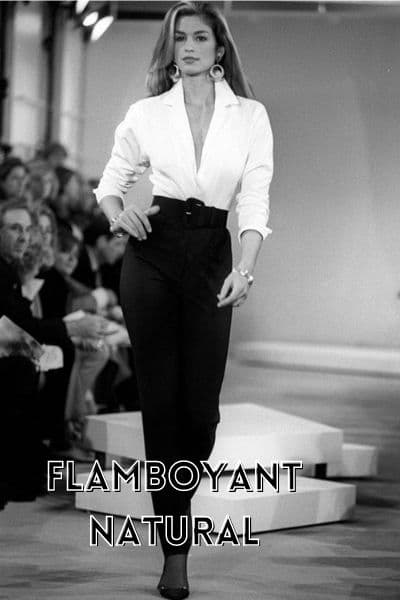
The flamboyant natural body type has a vertical skeletal structure with long limbs, but what sets them apart is their blunt edges and width in their upper shoulders and back. They are not narrow like the pure dramatics and they have the signature Kibbe width trait. This is seen in openness in the upper back, shoulder, and torso area. They can have a “conventional curve” (please see the kibbe curve video above for what kibbe curve is) but their shoulder line will still be fairly prominent and they won’t need to dress with their “conventional curve” in mind. They have broader facial features (that are blunt, not angular).
Examples: Cindy Crawford, Cameron Diaz, Jennifer Lawrence, Amy Adams
Want to learn what to wear as a flamboyant natural? My ultimate style guide for Flamboyant Naturals, including outfit ideas is here.
Soft Natural
(SN): Soft yang with yin undercurrent
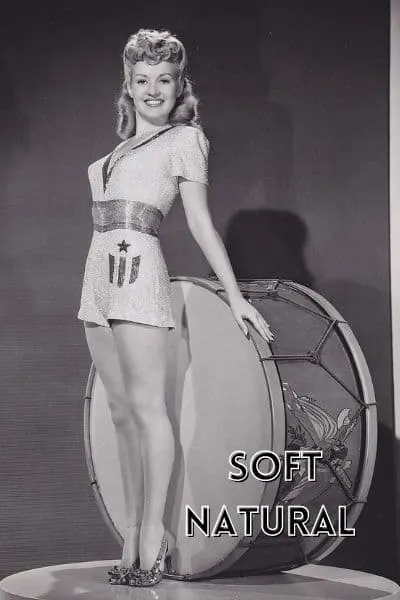
The soft natural body type has prominent curves and width, however, this comes from their skeletal structure and not their flesh (like with romantics). They have broader shoulders that create a prominent horizontal line in their body type. They can be moderate in height or slightly shorter. They can also appear even curvier than some romantics because of their wider bone structures. So think blunt and broad bone structure softened by their flesh.
Examples: Jennifer Lopez, Kat Dennings, Chloe Sevigny, and Betty Grable
Want to learn exactly what to wear as a Soft Natural? The full Soft Natural style guide is here.
Dramatic Classic
(DC): Balanced with yang undercurrent

Dramatic classic body types have balanced bodies, and there is an even-ness that they exude. Their limbs can be long, but they don’t appear overly vertical because they have their shoulders and hips balancing that out. Their yang undercurrent is usually in their slightly angular edges. They have a moderate height (up to 5 ft 7”) and proportionate bust, waist, and hip ratios. This body type is predominantly classic (balanced) with some angular (dramatic) notes.
Examples: Olivia Munn, Jackie O, Maggie Siff, Lizzie Caplan, Jill Biden
Here’s the ultimate guide to the Dramatic Classic Style and Body Type
Soft Classic
(SC): Balanced with yin undercurrent
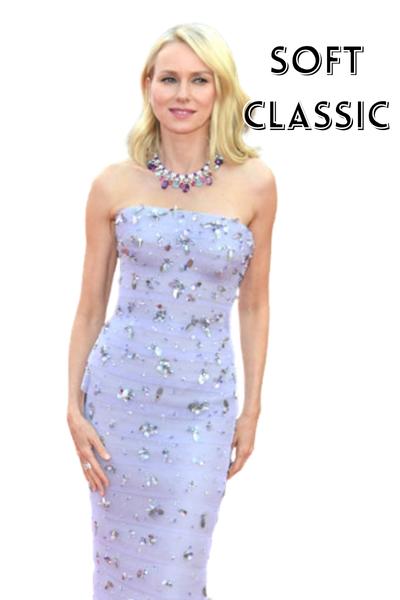
Soft classic types have balanced features and bodies like their classic family members. However, they have a softness in some of their features ( especially in their face). They don’t have “wide” or “narrow” bodies and their bones are not considered long or short, they give off a balanced and refined shape. If they have curves, they don’t disrupt the overall shape of their body in any distinct way. Their height is moderate, usually up to 5ft 6 in. They have soft edges and their shoulders are usually slightly sloped. Their facial features are not prominent but they can be wide (nose, jawline).
Examples: Dakota Johnson, Denee Benton, Marion Cotillard, Meryl Streep, Kirsten Dunst.
Here is the ultimate SOFT CLASSIC style guide
Flamboyant Gamine
(FG): Mixture of Yin and Yang, with a yang undercurrent
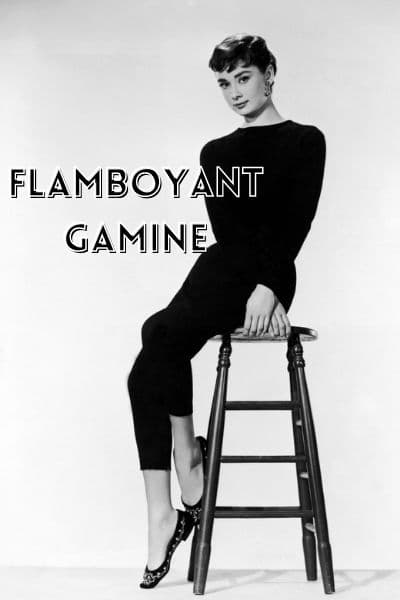
The flamboyant gamine body type is a combination mixture of yin and yang. They are petite (under 5 ft 5 inches typically) with a narrow frame that leans towards yang because of the lack of waist emphasis and curves. They have straight bodies and long vertical legs that can be described as almost colt-like. Their facial features usually consisted of larger eyes (yin), moderately full lips, and defined noses and jawlines (yang).
Examples: Audrey Hepburn, Jennifer Love Hewitt, Penelope Cruz, Julia Garner
Soft Gamine
(SG): Mixture of Yin and Yang with an undercurrent of yin
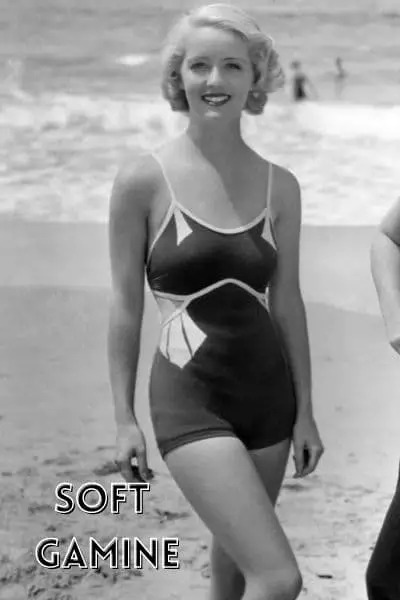
The soft gamine body type, like the flamboyant gamine, has a petite stature (yin) with a narrow frame (yang) with potentially angular shoulders (yang). Their yin undercurrent is due to their compact curves. They are always small but not necessarily thin, but more narrow than the romantics. They are under 5 ft 5 in and have a delicate bone structure. They have small hands and feet and delicate (sometimes appearing broad) facial features. They lean more towards fleshiness and have curves along their bust and hips, with moderate waist definition. They tend to have doll-like facial features (larger eyes, full cheeks, and moderate to full lips).
Examples: Bette Davis, Reese Witherspoon, The Olsen Twins, Judy Garland, Halle Berry, and Winona Ryder
Theatrical Romantic
(TR): Extreme Yin, slight yang undercurrent

Because theatrical romantic body types are part of the romantic family, they have shorter bones, and their body shape is defined predominately by their flesh. They are usually 5 ft 5 in and under. They are often small with a curvier silhouette. They have soft flesh and a curved body shape with softer shoulders, arms, and legs. Their facial features are small and delicate (yin) but with some sharp edges throughout the jawline, cheeks, and nose ( yang).
Examples: Mila Kunis, Vivien Leigh, Selma Hayak, Jada Pinkett-Smith, Selena Gomez
Ultimate Theatrical Romantic Style Guide, here
The Benefits and Pitfalls of the Kibbe Body Types
As you have probably noticed, there is a lot to consider when typing yourself with the Kibbe image identity system. And it is recommended that if you want to figure out your type, you ask other *knowledgeable* people to help you categorize yourself. This prevents innate bias and the impact of body dysmorphia. Kibbe himself still offers in-person typing in New York City, and you can find information on that here (but fair warning, it is not inexpensive).
The benefits of the Kibbe body system are that it teaches you to embrace your body and find style lines that are in tune with your body. When you look at more than just your bust, hip, and waist measurements, you can start to hone your personal style more effectively and realize why certain styles look “off”.
It is ultimately about harmonizing your body with your clothing and embracing a “true you”.
That being said there are some pitfalls when applying the kibbe body system.
Because the kibbe body system was developed in the 1980s, it can have slightly outdated results. David Kibbe himself has contradicted his own advice, and “re-assigned” certain celebrities.
Another pitfall to the kibbe body system is the yin/yang association with feminine/masculine. This tends to shade our opinions and have us innately pick more feminine answers (when taking the test) if we identify or were born female. So, bias is a real issue with this system. This is not a stereotype that David Kibbe perpetuated and is largely out of his hands. But, please do not equate yin with feminine and yang with masculine.
Furthermore, there is a lot of misinformation out there and a lot of changes have been made to the system over the years. Kibbe suggests if you are DIY-ing your ID to put less focus on your face and a stronger emphasis on how fabric drapes over your body.
My advice…. The kibbe body system is useful but should not be overly scrutinized. It’s great to dig into and explore where you fit. But if you’re overwhelmed, or oscillating between two options, use the info as a guide instead of a definitive categorization. It is a journey to even determine your kibbe type and best done with the help of other knowledgeable kibbe fans, or on your own. David Kibbe says the only two people who are allowed to type you are: yourself or him. So while others’ opinions can help eliminate your own bias or preconceived notions, expect to spend around 6 months understanding the terminology and the purpose of this system.
How have the Kibbe Body Types evolved since Metamorphosis?
David Kibbe’s Book Metamorphosis was published in 1987, so it makes sense that the system itself has evolved since then. Here are some things to keep in mind:
- According to Kibbe, your body features are more critical than your facial features when classifying yourself under each of his 13 types. (when you are diy-ing your ID and not seeing him directly)
- Your classification or image ID is not a piecemeal assessment. You must look at your entire body and do a gestalt assessment that takes into “either” “ors”. (which can be very hard to do on yourself).
- Height is a hugely impactful deciding factor. For instance, a gamine is not usually over 5 ft 6 in.
- If you are over 5 ft 7 inches you are automatically placed in one of three options: the Dramatic, the Soft Dramatic, or the Flamboyant Natural. You have automatic yang because of your height.
- The way your bones are structured and where or how your flesh lays on top is much more important than your actual bust, hip, and waist measurements.
- Non-binary people are more visually represented
- The kibbe system does not work for everyone- it depends on how you learn and like to use style. It was touted as the style bible in the ’80s. However, as women’s style has evolved we find the classifications are not one size fits all. Some people may find great clarity using the system while others will feel more lost.
- Kibbe has removed the pure Natural, pure Classic, and pure Gamine types because he stated that most people will not fall perfectly in the middle and will fall either towards the yang or yin side of an ID.
Not ready to take the quiz, but still want to learn more about each ID and what style lines they each wear? Check out my article, here.

WOW, I’m sure you’re overwhelmed by all the information thrown at you. But, that is to be expected.
My takeaway: The Kibbe body type system is extremely helpful if you’re looking to hone your style or dress better. But, it shouldn’t be taken as a science and you shouldn’t overly stress if you can’t figure out your own type.
If this body type system doesn’t work for you, check out the more traditional body type system here.
Otherwise, have fun exploring your shape, and let me know what kibbe body type you are!
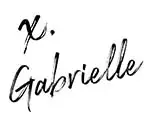
You’ll DEFINITELY need this to refer back to, so be sure to pin the below image!
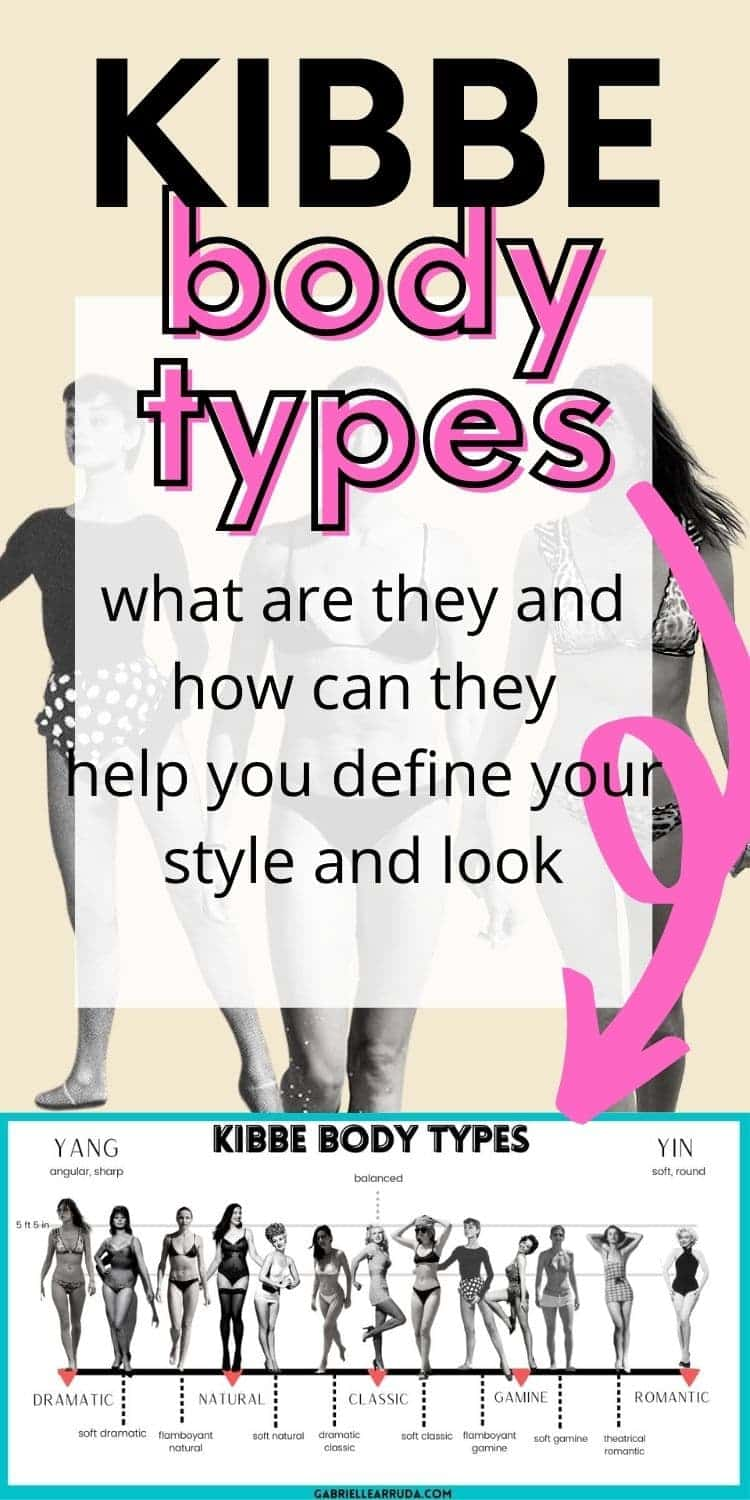

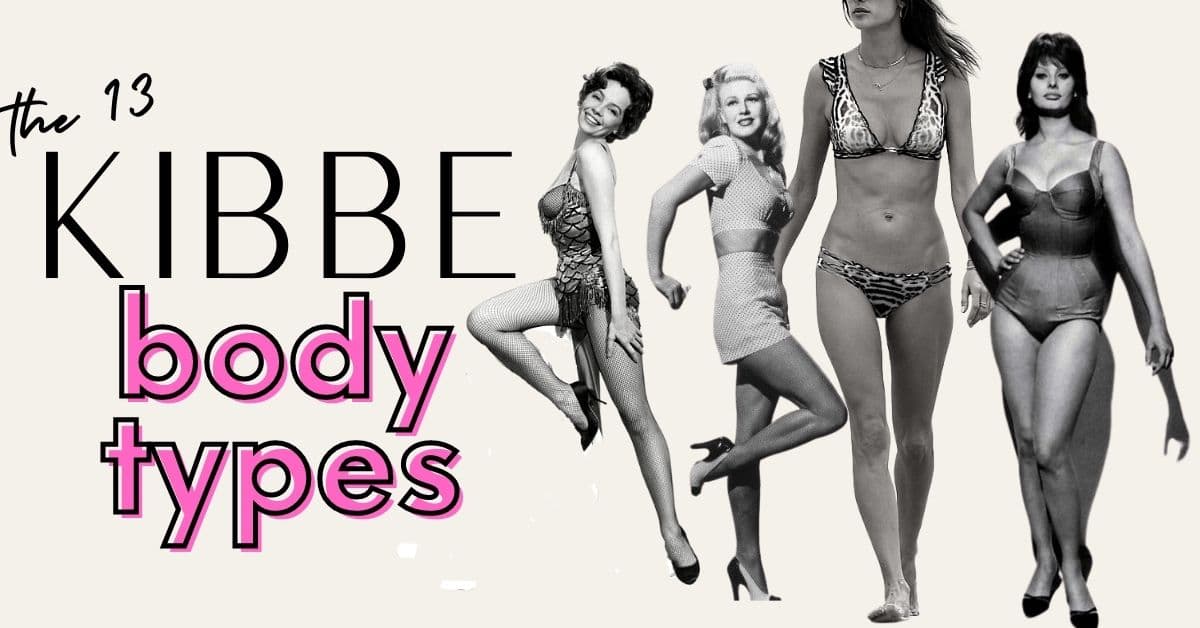
Nico
Friday 28th of July 2023
Every time i found a body time that slightly resembled mine it said max 5’7 and I’m 5’10 so idk if im too tall or what
Kim
Monday 17th of July 2023
I should have read this first before jumping into the quiz. I thought maybe I was Theatrical Romantic or another type. Now, I see that I am very much a Romantic. There's no Yang in my bone structure and my curves are more pronounced. Here's to jumping in without doing my due diligence. haha
Amy
Thursday 1st of June 2023
Love this article! This is my first intro to Kibbe and I have a question—I am stuck somewhere between a soft dramatic and some version of a romantic. Is it, no matter what, if you are over 5'7" you are a dramatic? I am almost 5'8" and would describe myself as a an extreme hourglass. I feel my face has mostly rounded features (save prominent cheekbones and defined jaw). Where I get stuck (especially on the quiz) is that I have a naturally short torso and extreme definition between bust-waist-hips that remains regardless of gaining or losing weight, but am tall with long slender hands and feet. I'd characterize my limbs as long, but the short torso makes me fell like they're not? I have very large hips (where weight piles first and comes off last), so ic pull also be part optics in me thinking my arms aren't half-way down my thighs? Any insights would be helpful 🙂
Naphtali
Saturday 18th of March 2023
Hey Gabrielle, how do I know if I have double curve or contrast?
I think I could be a soft gamine but I'm still not sure about that part.
Gabrielle Arruda
Saturday 18th of March 2023
this post might help: https://gabriellearruda.com/kibbe-soft-gamine-style-guide/
ROFLMAO
Thursday 2nd of March 2023
Those aren't body types, they are one man's fantasy ideals, and so outdated it's laughable.
Gabrielle Arruda
Thursday 2nd of March 2023
hmm, I hardly think they are "fantasy ideals". There are a lot of incorrect stereotypes about the image identities (which is how kibbe refers to them over the language of "body types"). But if you don't like them, don't use them.